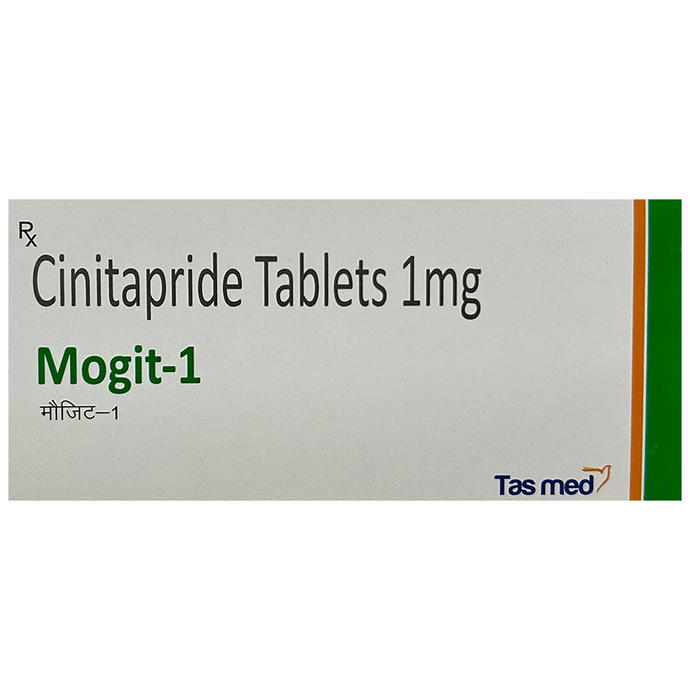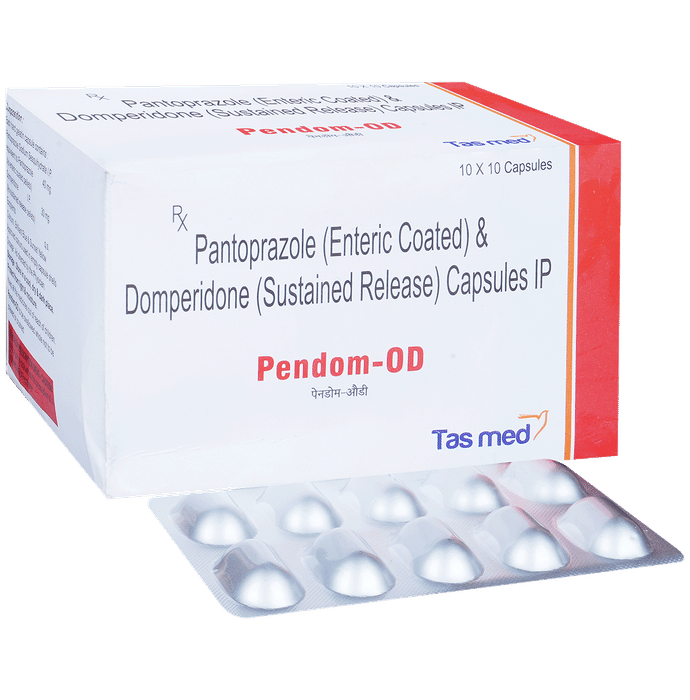Hedfree Tablet SUMATRIPTAN + NAPROXEN
Hedfree Tablet is recommended to be taken with food It is important to take it at the same time every day to maintain a consistent level of medication in the body Do not skip any doses and complete the full course of treatment even if you start feeling better If you happen to miss a dose take it as soon as you remember Follow your doctors advice and continue taking the medication for the prescribed duration It is important not to abruptly stop taking it without consulting your doctor Some potential side effects of using this medication include nausea heartburn chest discomfort dry mouth weakness muscle stiffness drowsiness numbness of extremities and irregular heartbeats These side effects are generally temporary and usually resolve by themselves If these side effects persist or concern you please consult your doctor In the beginning of your treatment this medication may cause drowsiness so refrain from driving or operating machinery until you understand how it affects you This medication may also cause changes in mood and potentially lead to feelings of depression so it is important to regularly monitor your behavior If you are pregnant or breastfeeding it is advisable to consult your doctor before taking this medication Inform your doctor if you have any heart problems as the use of Hedfree Tablet may not be suitable in certain heart conditions Regular monitoring of blood pressure is necessary while taking this medication If you experience severe chest or stomach pain bloody diarrhea or significantly high blood pressure after taking this medicine consult your doctor immediately and discontinue its use


Are the medicines in combination of Naproxen and Sumatriptan safe to take together?
When used together, naproxen and sumatriptan do not have significant direct interactions, but caution is advised when they are combined with other medications. Both can interact with SSRIs and SNRIs, increasing the risk of serotonin syndrome. Monitoring for symptoms like agitation, hallucinations, and changes in blood pressure is important. Naproxen can also interact with anticoagulants, increasing bleeding risk, so regular monitoring of blood clotting parameters may be necessary. Patients should have regular check-ups with their healthcare provider to monitor for any adverse effects or interactions.

Are there harms and risks from taking combination of Naproxen and Sumatriptan?
Common side effects of sumatriptan include flushing, tingling, drowsiness, and dizziness. Serious side effects can include chest pain, shortness of breath, and changes in vision. Naproxen may cause side effects such as stomach pain, heartburn, dizziness, and drowsiness. Serious adverse effects include gastrointestinal bleeding, ulcers, and increased risk of heart attack or stroke. Both medications can cause dizziness and drowsiness, and patients should be cautious when driving or operating machinery. It's important to monitor for serious side effects and seek medical attention if they occur.

Can I take combination of Naproxen and Sumatriptan if I am pregnant?
Sumatriptan is generally considered safe during pregnancy, but it should only be used if the potential benefits outweigh the risks. Naproxen, like other NSAIDs, is not recommended during the third trimester due to the risk of premature closure of the fetal ductus arteriosus and other complications. Both medications should be used with caution during pregnancy, and only under the guidance of a healthcare provider, to ensure the safety of both the mother and the developing fetus.

Can I take combination of Naproxen and Sumatriptan while breastfeeding?
Sumatriptan is excreted in breast milk, but the amount is generally low, and it is considered relatively safe for use during breastfeeding. However, it is recommended to avoid breastfeeding for 12 hours after taking sumatriptan to minimize infant exposure. Naproxen is also excreted in breast milk, and while it is generally considered safe, prolonged use should be avoided due to potential effects on the infant. Both medications should be used under the guidance of a healthcare provider during lactation to ensure safety for the infant.

Can I take combination of Naproxen and Sumatriptan with other prescription drugs?
Sumatriptan should not be taken with other migraine medications like ergotamines or other triptans within 24 hours due to the risk of serious cardiovascular side effects. Naproxen can interact with anticoagulants, increasing the risk of bleeding, and may reduce the effectiveness of antihypertensive drugs. Both medications can interact with SSRIs and SNRIs, increasing the risk of serotonin syndrome. Patients should inform their healthcare provider of all medications they are taking to avoid potential interactions and ensure safe use.

For how long is combination of Naproxen and Sumatriptan taken?
Sumatriptan is used on an as-needed basis for acute migraine attacks and is not intended for long-term use or prevention. Naproxen can be used for both short-term relief of acute pain and inflammation and for longer-term management of chronic conditions like arthritis. However, prolonged use of naproxen should be monitored by a healthcare provider due to potential side effects. Both medications should be used according to the prescribed guidelines to minimize risks.

How does combination of Naproxen and Sumatriptan work?
Sumatriptan works by activating serotonin receptors in the brain, which leads to the narrowing of blood vessels and blocking of pain signals, effectively treating migraines. Naproxen, an NSAID, inhibits the production of prostaglandins, substances in the body that cause inflammation and pain. While sumatriptan specifically targets migraine pathways, naproxen provides a broader anti-inflammatory and analgesic effect. Both medications help alleviate pain, but through different mechanisms, making them complementary in treating migraine symptoms.

How does one take combination of Naproxen and Sumatriptan?
Sumatriptan can be taken with or without food, but taking it with food may help reduce stomach upset. Naproxen should be taken with food or milk to minimize gastrointestinal discomfort. It's important to follow the specific instructions provided by a healthcare provider or pharmacist for each medication. Both medications should be taken with a full glass of water, and patients should avoid alcohol to reduce the risk of stomach irritation and other side effects.

How do I know if combination of Naproxen and Sumatriptan is working?
The benefit of sumatriptan is assessed by its ability to relieve migraine symptoms, such as headache, nausea, and sensitivity to light and sound, within a few hours of administration. Naproxen's effectiveness is measured by its ability to reduce pain and inflammation in conditions like arthritis and acute injuries. Both medications are considered effective if they provide significant symptom relief and improve the patient's quality of life. Regular monitoring and communication with a healthcare provider are essential to ensure optimal outcomes and adjust treatment as needed.

How do I store combination of Naproxen and Sumatriptan?
Neither naproxen nor sumatriptan requires refrigeration. Both medications should be stored at room temperature, away from excess heat and moisture, and kept in their original containers with the lids tightly closed. It's important to keep these medications out of reach of children and pets to prevent accidental ingestion. Proper storage ensures the medications maintain their effectiveness and safety.

How effective is combination of Naproxen and Sumatriptan?
Clinical trials have demonstrated that sumatriptan effectively reduces migraine symptoms, such as headache, nausea, and sensitivity to light and sound, within a few hours of administration. Naproxen has been shown to effectively reduce pain and inflammation in conditions like arthritis, gout, and menstrual cramps. Both medications have been proven to improve patient quality of life by alleviating symptoms and allowing for normal daily activities. The combination of these medications can provide comprehensive relief for migraine sufferers by addressing both pain and inflammation.

How long does it take for combination of Naproxen and Sumatriptan to work?
Sumatriptan typically begins to work within 30 minutes to 2 hours after taking it, providing relief from migraine symptoms. Naproxen, on the other hand, can start to relieve pain and inflammation within 1 hour, with its effects lasting longer due to its extended-release formulation. Both medications are used to treat acute conditions, with sumatriptan targeting migraines specifically and naproxen addressing various types of pain and inflammation. The combination of these two medications can provide a more comprehensive approach to managing migraine symptoms by addressing both pain and inflammation.

What disease or symptom is combination of Naproxen and Sumatriptan used for?
Sumatriptan is indicated for the acute treatment of migraine headaches, with or without aura, in adults. Naproxen is used to relieve pain and inflammation associated with conditions such as osteoarthritis, rheumatoid arthritis, ankylosing spondylitis, gout, and menstrual cramps. While sumatriptan is specifically for migraines, naproxen addresses a wider range of pain and inflammatory conditions. Both medications are used to manage acute symptoms and improve patient comfort.

What is combination of Naproxen and Sumatriptan?
Sumatriptan is primarily used to treat migraine headaches by narrowing blood vessels in the brain and blocking pain signals. Naproxen is a nonsteroidal anti-inflammatory drug (NSAID) used to relieve pain and inflammation from conditions like arthritis, gout, and menstrual cramps. While sumatriptan specifically targets migraines, naproxen provides broader pain relief and anti-inflammatory effects. Both medications work by interfering with the body's pain pathways, albeit through different mechanisms.

What is the usual dose of combination of Naproxen and Sumatriptan?
For sumatriptan, the usual adult dose is 25 mg, 50 mg, or 100 mg, taken at the first sign of a migraine. If symptoms persist, a second dose can be taken after 2 hours, with a maximum of 200 mg in 24 hours. Naproxen's typical adult dose for pain relief is 500 mg to 1000 mg per day, divided into two doses, with a maximum of 1500 mg per day for short-term use. Both medications should be used as directed by a healthcare provider, and it's important not to exceed the recommended doses to avoid adverse effects.

Who should avoid taking combination of Naproxen and Sumatriptan?
Sumatriptan is contraindicated in patients with a history of heart disease, stroke, or uncontrolled hypertension due to the risk of serious cardiovascular events. Naproxen should be used with caution in patients with a history of gastrointestinal bleeding or ulcers, as it can increase the risk of these conditions. Both medications should be used cautiously in patients with liver or kidney disease. Patients should inform their healthcare provider of their full medical history to ensure safe use and avoid potential complications.












.svg)
